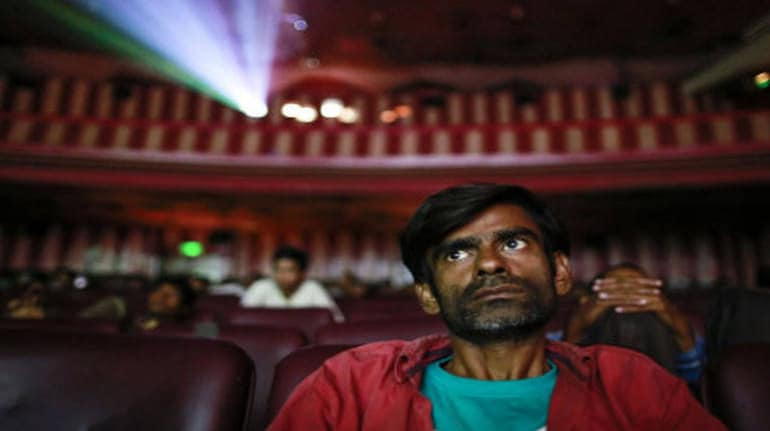Single-screen owners are not happy with the content on offer and say single screen theatres need eight to 10 tentpole films in a year
Recently, single-screen owners in Karnataka have said they are considering complete shutdown as losses related to coronavirus are mounting.
The Karnataka Film Exhibitors’ Association last week wrote a letter to Finance Minister Nirmala Sitharaman, saying the exhibitors in the state have suffered a loss of Rs 21 crore so far due to the lockdown, a move taken to curb the spread of the outbreak.
While single-screen owners in other states may not be considering a total shutdown, the situation is critical for all.
“I have no doubt that a lot of them are in a vulnerable state right now. Even for the relief measures, we were one of the first people to reach out to the government because we are vulnerable. Exhibition is a cost-heavy sector. It is not easy to open theatres. And single screens in the exhibition space is even more vulnerable than multiplexes because the national chains are public limited, they have debt exposure so they have liquidity, or they have venture capitalists backing them. I know a lot of them will not open when authorities allow them to,” Akshaye Rathi, film exhibitor/ director, Saroj Screens PVT Ltd, told Moneycontrol.
He added that shutting of single screens will result in job losses. "Plus, single screens employee a lot of people who are from the weaker and more vulnerable sections of society. There are many who belong to below poverty line families.”
Concurring with Rathi, Teja, who owns a single-screen theatre called Movieland in Andhra Pradesh, said, “Unemployment will rise if single screens were to shut down.”
Single screens, even before corona, were dealing with many troubles. According to EY 2019 report, total screens decreased by 74 in India last year and this decline was fueled by shutdown of single screens.
From 7,031 single-screen theatres in 2016, the country by 2019 was left with 6,327 single screens.
And now corona has added to the troubles of single-screen owners.
“I have a workforce of 350 people and I am paying them from my own pocket. From the relief package, what can possibly help single screen owners is loans. However, for single-screen exhibitors, this is not a high profit business. At least for single screens, it is not feasible to take loans and pay them back. For many, loans are hardly an option,” said Rathi.
Teja suggested that theatres can be used for other purposes. “We can go for godowns (warehouse)/storage showrooms. However, we will have to change the license. Every year we renew licenses. If we want to change the business, we will have to change everything and we have to show that we were not able to earn through the theatre. In this situation, the government can help us. It will be better if government allows change of licenses in an easier manner. Despite this move, there will be impact on employment as all the people working in theatres cannot be absorbed for other businesses,” he said.
Rathi also highlighted the challenges that single screens faced before corona and which can be done away with for ease of doing business whenever they resume operations.
“Among the external challenges, there are a whole set of regulations and compliance that needs to be followed. A lot of which can be done away with. Every year, we have to secure NOCs (no objection certificates) from 14 departments and that is required to renew our licenses. This can be turned into a single-window licensing system which will require lesser compliance,” said Rathi.
He added, “Taxation on the sector even now is fairly high considering the fact that single screens are for common man’s entertainment. Also, single screens are usually in prime locations. So, the cost of the real estate is high.”
Along with external challenges, single-screen owners are not happy with the content on offer. Bot Rathi and Teja say not many movies are made for the single-screen audience.
“First, supply of content is an issue. A lot of movies do not reach single screens. Then the kind of films made for single screens is few. There was Salman Khan’s Radhe which we don’t know when it will release. There is no Shah Rukh Khan film on the floors. No Aamir Khan film either. The single screens depend on eight to 10 tentpole films,” explained Rathi.
Even the EY 2019 report pointed out that number of screens in India continue to fall as content is being created to cater to the top 100 million consumers. Hence, mass Hindi content audience are not being served.
“Multiplexes are mostly present in urban markets. For common man, there is no avenue of entertainment apart from cinemas. Hence, to keep the habit of movie-going alive, you need single screens. PVR and INOX screens are adding screens aggressively but still the screen density has gone down. So, the number of screens shutting down is higher than screen additions. Also, they are concentrating on few geographies in comparison to single screens,” added Rathi.
Moneycontrol Virtual Summit presents 'The Future of Indian Industry', powered by Salesforce. Watch Now!














